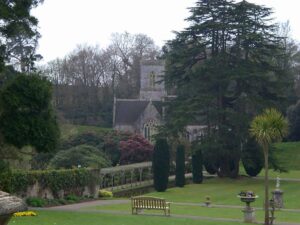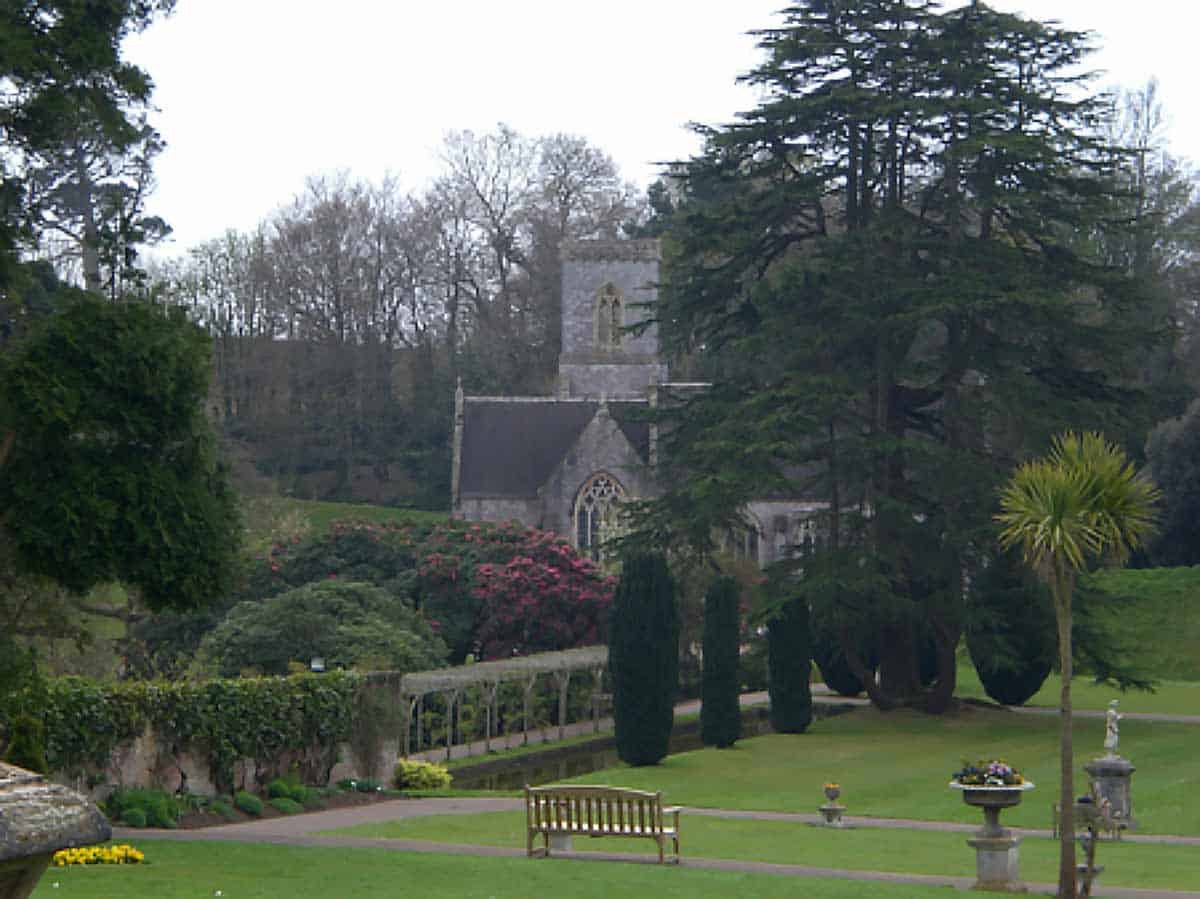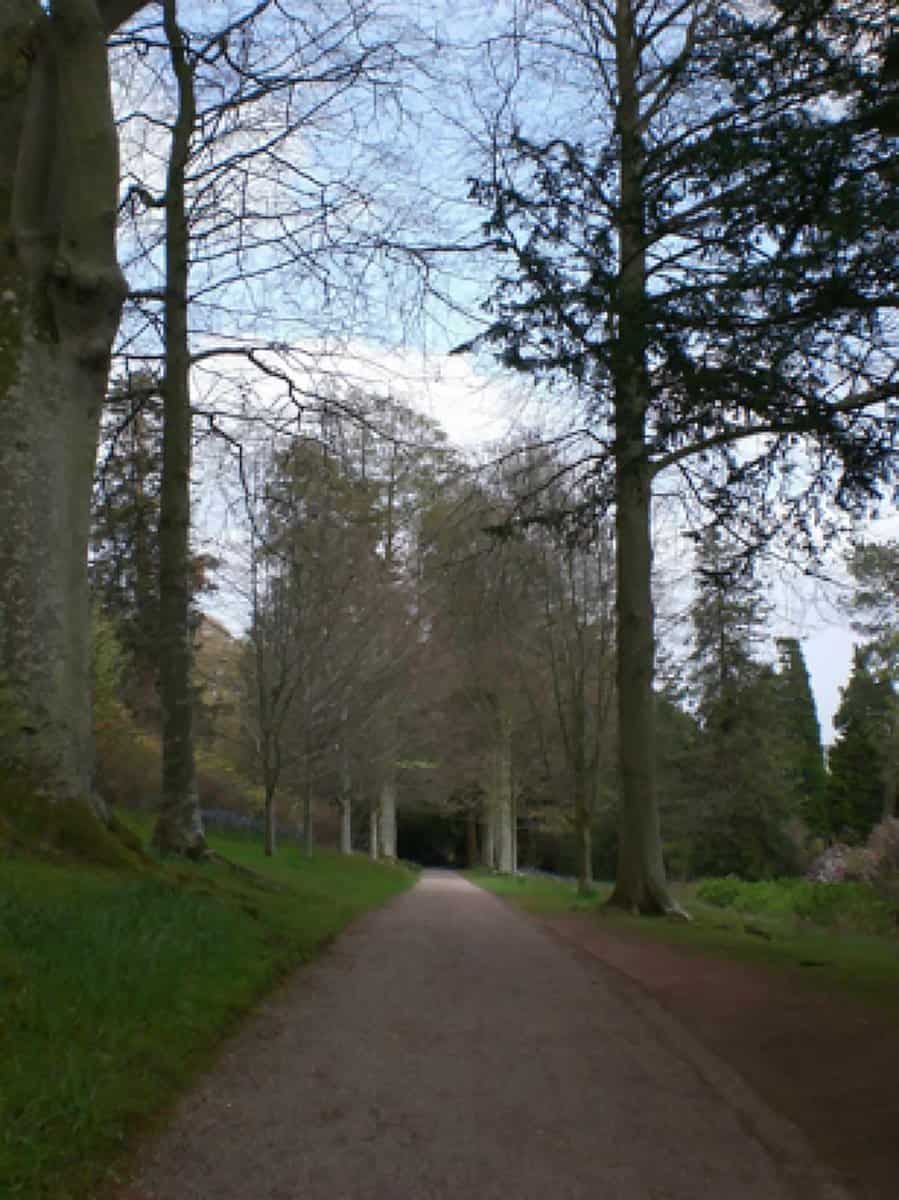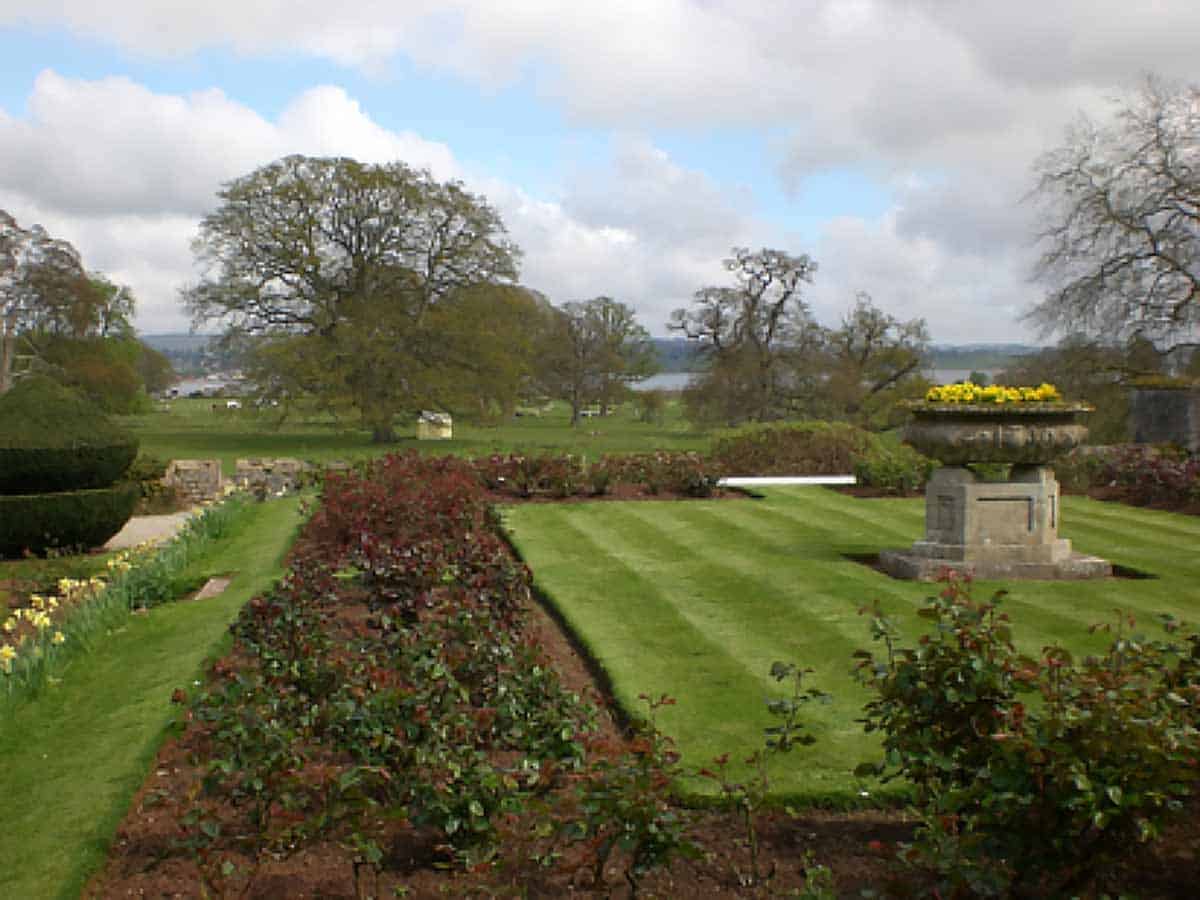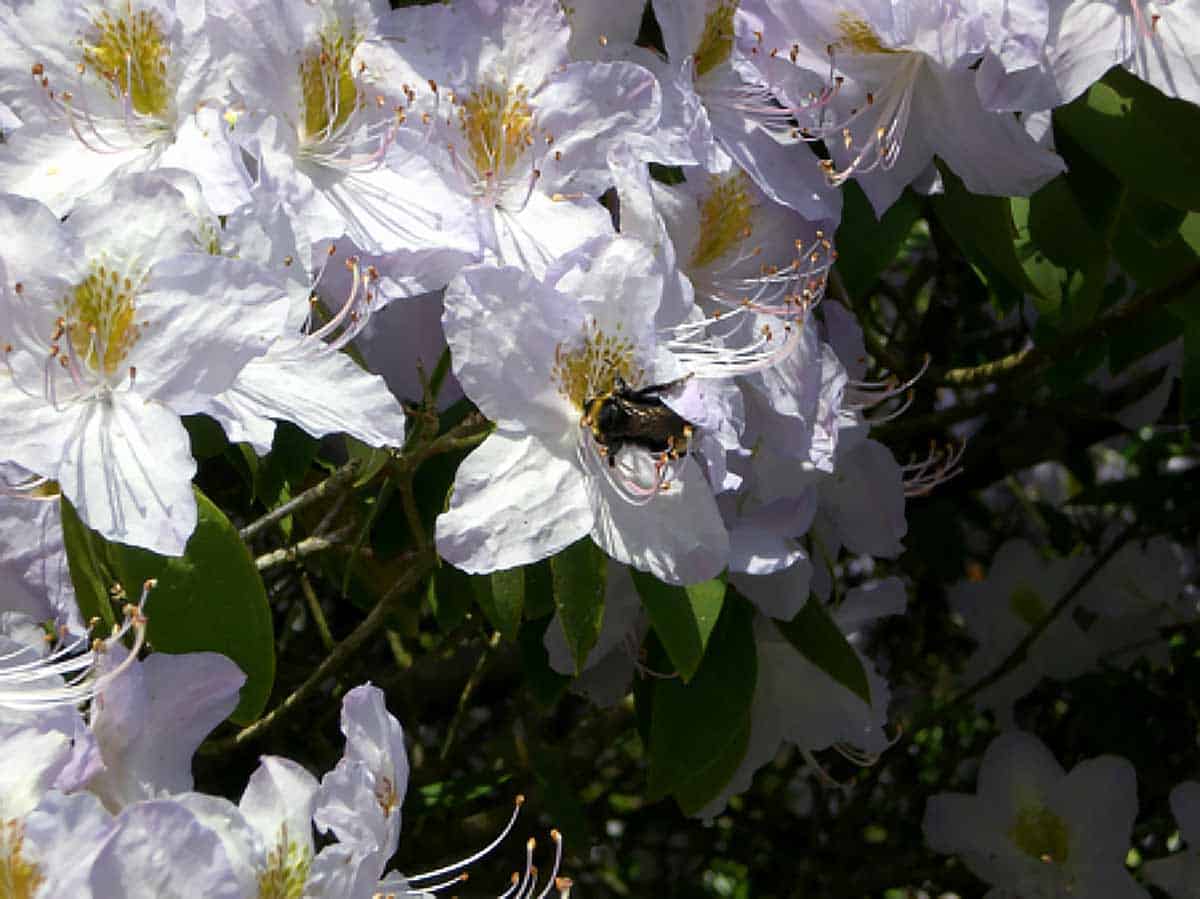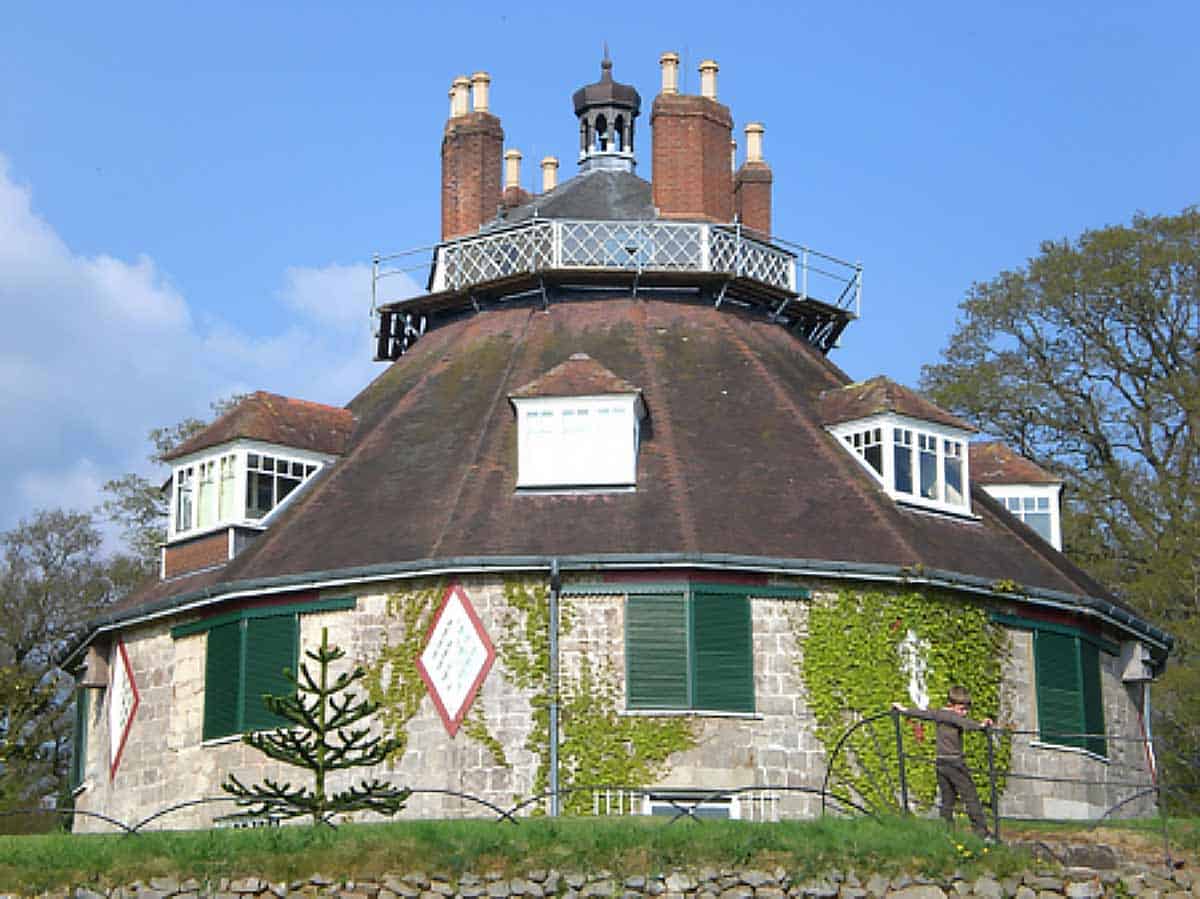When I ask writers and artists to name the places that have inspired them the most, they very often begin to tell stories about arduous journeys to those areas of outstanding beauty that are true wildernesses, barely touched by humanity. It seems that in many a mind, the more an environment is interfered with by humans, the uglier and paltrier it becomes, and so the less likely it is to inspire. In this article, I want to challenge that assumption, and demonstrate how human-designed environments can provide just as rich a source of beauty, ideas and inventiveness. It is worth reminding ourselves after-all, that every wilderness is shaped by the species of animal and plant that live in it, and most are now carefully managed and protected by human beings in order to preserve the delicate balance of their ecosystems. There is no reason why environments fashioned and lived in by our species in particular should be any less beautiful or inspiring, even though so many are.

There are many examples of human-designed landscapes deserving of praise, including some of our urban and sub-urban parks, private gardens, nature reserves, farms, cemeteries, playing fields, allotments and cycle routes. However, in this article I focus on the unsung heroes of artistic and literary inspiration that are our heritage sites; the buildings, landscapes, gardens and estates belonging to our country houses, botanical institutes, palaces, abbeys and castles that are cared for by those dedicated to preserving the cultural heritage of our nation and regions, and to making it as open and accessible as possible. These are the places that take us away from the stresses of ordinary life, and the dreariness of so many of our offices, schools and housing estates. They transport us into other worlds; those which were once enjoyed only by the privileged elites of our country’s past. For a predominantly urban population, these are environments which offer us easy access to nature, and nature in spectacular diversity, which is so valuable for stimulating creativity.
Here I explore the five features of these heritage sites that make them such a precious resource for poets and writers, and indeed for creatives of all genres.
 Cutting edge payroll software
Cutting edge payroll software
- Powerful and easy to use
- HMRC & RTI compliant
- Used by payroll pros
 The CRM platform to grow your business
The CRM platform to grow your business
- Great for entrepreneurs
- Powerful data analytics
- Manage sales and data
 Powerful web builder and advanced business tools
Powerful web builder and advanced business tools
- Great for startups
- Powerful web page builder
- E-commerce available
 Supercharged content planning
Supercharged content planning
- Great for marketing
- Better than lists or sheets
- Manage social media
 Create a new website in 10 minutes. Easy.
Create a new website in 10 minutes. Easy.
- Launch your website fast
- Powerful data intuitive
- No coding skills needed
1. Multi-faceted Landscapes
Heritage sites are able to fuel the imagination in a whole host of ways. From textiles, paintings and interior designs within their buildings, to landscape gardens and impressive architectural structures, to the patterns in nature itself throughout their extensive grounds, there is no end of raw material to work with in creating something original for ourselves. Many heritage sites boast an incredible diversity of plant and animal species both imported and native, and play a vital role in the conservation of those that are endangered. For example, the ancient oak trees often protected within their grounds, some of which are many hundreds of years old, are of particular ecological and cultural value, since they provide important habitats for a variety of fungi, lichen, insects and bats and create some of England’s oldest, most written about and best loved woodland scenery.
In addition to carefully cultivated and sculpted gardens featuring designs and species from around the world, these heritage sites often contain within them farmland, parkland, and wild areas such as woodland, scrubland, marshland, wild flower meadows, and lakes and waterways which are protected from urban development. These sites provide landscapes in miniature that we might otherwise have to travel great distances to see, and therefore bring new cultures and ideas to those who would otherwise never be exposed to them. They also have the potential to teach us a great deal about how to manage our environment, and how to engage with it meaningfully without causing harm.
View of Bicton Park Botanical Gardens and Bicton Parish Church of St Mary © Ana Wong Photography 2009
2. Intimate Histories
In contrast with the geological interest provided by more extensive landscapes (which I admit is of incomparable value for those of us who are enthusiasts of ‘Big History’), these smaller sites nonetheless enthral us with their more intimate stories of family and home; with their human and architectural histories. As I walk the grounds of Killerton House in the rolling Devon countryside, I cannot help but sense that the rare and ancient trees have born witness to the dramas of the Acland family and their predecessors over many generations. Some would have been privy to delicate conversations, personal and political, such as those that would have taken place between architect Anne Stella Acland (nee Alford) and her husband Sir Richard Acland MP, as he came to the opinion that the estate should be sold on account of his political beliefs, and as Anne persuaded him instead to hand it over to the National Trust. They would also have been witness to moments of joy and romance, such as the fabled devotion of Harriet and John Acland, a couple who would no doubt have strolled among the magnolias and rhododendrons in the late 18th Century before their adventures in America, and to moments of sorrow and even tragedy, such as the death of 10-year-old Ellen Acland, daughter of Francis and Eleanor, who fell from her bicycle outside the park gates in 1924.
In addition to these family histories and traditions of the modern era, which are enough in themselves to inspire a great many literary and artistic works, many heritage sites are built upon layers of previous settlements due to their advantageous or strategic locations, and this means they are often of archaeological interest, and can tell us about the lives and works of communities dating back to much earlier times. Some heritage sites are of course primarily archaeological sites or ruins. Just like our museums, libraries, galleries and archives, these sites provide us with a cultural heritage; the lens with which to view both our collective human past and our regional or local histories, within which we can better frame and explore our own identities and pursuits. Most writers and artists will acknowledge that it is through enriching our cultural lives, and therefore, our knowledge of ourselves and others, that we begin to produce our most mature and memorable works.
Path among the trees, Killerton House Gardens ©Ana Wong Photography 2009
3. A Perfect Balance
One of the most glorious experiences for me is the sight of a human-designed landscape and architectural structure within a more wild and unpredictable setting. Such a view combines order and variety in exactly the balance that most pleases our human sensibilities. Organised complexity, with the signs of life in abundance, has to be the greatest nourishment for imaginative thinking; the kind of thinking that leads to new ideas and innovations, both incremental, when old traditions and techniques are developed upon, and disruptive, when these traditions and techniques are supplanted by something entirely new. Heritage sites often have this organised complexity in perfect balance and use materials in keeping with the surrounding geography. They stand as a fine example for contemporary architects and developers to emulate, albeit with modern designs that reflect modern values, incorporate new materials, and which are of course much more energy efficient. Those heritage properties with broader views of surrounding natural landscapes, or even of built environments that are nonetheless attractive, leave a particularly powerful impression as the open aspect somehow prizes apart the shutters of the mind, leaving one strangely vulnerable to new and exciting possibilities.
It is equally important not to miss the opportunities afforded by the study of human life in these contexts; the exuberant children rolling down the grassy bank or the elderly ladies drinking tea and exchanging anecdotes in the restaurant gardens. We should see our fellow visitors as a moderating or even elevating influence and as our companions on the road of life, rather than an eyesore or annoyance, even if most of us are somewhat less elegantly mannered and attired these days when compared with the owners and guests of an earlier era. It is possible to have this attitude as long as there is not so much overcrowding as to restrict our view, movement or comfort. At the very best heritage sites, the custodians understand this, and are careful to design their landscapes and curate their collections in ways that allow the easy flow and pause of visitors. They have enough well-timed, thoughtfully situated and engaging attractions as to disperse the population adequately throughout the buildings and grounds. They also avoid making the fatal mistake of cluttering rooms and gardens with so many things that each ends up poorly contextualised and impossible to appreciate in the way it deserves. The most successful heritage sites are those where visitors feel relaxed and in control as they wander around, rather than bombarded by somewhat random sights and sounds and consequently overwhelmed.
View to the Exe Estuary from Powderham Castle Gardens ©Ana Wong Photography 2009
4. Hidden Worlds
The best heritage sites are those which are not so large and convoluted either indoors or outdoors that they quickly become wearisome. Ideally we enjoy surroundings that are easy for us to orient ourselves in, with guidance from a well-designed map if necessary, while also allowing visitors to get a little lost in nooks and crannies, and down narrow, winding or overgrown paths.
Cultivating the pleasures of both mystery and orientation is crucial to the success of these sites as they endeavour to create an unforgettable experience for every visitor. Indeed, for many writers and artists, the most inspirational moments come when one turns a corner and is suddenly arrested by an unexpected vision or encounter. In the gardens it might be an unusual tree formation, a wild animal scurrying away, a view beyond the garden to some distant hills, a bee entering a flower or an intriguing sculpture ingeniously situated. We might find ourselves immersed in worlds within worlds; a tree canopy high above, the life of a pond, a woodland floor covered with dewy moss, or a spread of autumn leaves or fallen petals or bluebells. In such surroundings, the microcosmic world of the insect appears every bit as remarkable as a great and sudden vista, and it is often the hidden places with their vibrant depth of character and charming imperfections that we remember more vividly than the acclaimed tourist attractions.
Bee extracting nectar, Knightshayes Court gardens ©Ana Wong Photography 2009
5. Literary Histories
Just like our national parks, geoparks and biosphere reserves, the smaller heritage sites can offer us all the health benefits of relaxation and enjoyment, combined with physical activity, and in addition to educational opportunities. They are easily accessible by public or private transport, are parent and child friendly, and importantly, are not so expensive in entrance fees that the less privileged are excluded. The indoor and outdoor areas and refreshment and dining facilities makes them ideal destinations all year round and in all weathers. These treasured properties constitute a shared inheritance for us and our descendants to play out an important part of our lives and relationships in, as we walk and talk, picnic or dine, tour, play and learn a little history on our weekends or days off. However, I believe they have the potential to be even more than havens for physical well-being and retreat.
In addition to the fact that almost all heritage sites have enduring collections of art works, a considerable number have important literary histories as well. I can point to several properties including A la Ronde, Coleridge Cottage, Greenway and Max Gate in the South West alone as having important literary significance. These are the former homes respectively of cousins Jane and Mary Parminter (who were both journal writers), Samuel Taylor Coleridge, Agatha Christie and Thomas Hardy. Contemporary writers and poets are still inspired by these buildings and landscapes just as their forerunners were. They certainly left a deep impression on me, growing up in suburbia with limited access to the countryside.
I cannot help but think that closer ties between heritage sites and the writers and artists who are interested in their landscapes and histories have the potential to breathe new life into these wonderful places. Writers and poets can engage people of all ages and from all walks of life in the process of creating a new, more democratic and inclusive history for these houses, castles, palaces and landscapes, and can do so by learning and building upon their literary and familial histories with all they have to teach us. I look forward to seeing new kinds of collaboration between writers and artists and the custodians of our heritage sites such as The National Trust, English Heritage and others; collaborations which will showcase the potential for these environments to become centres of creative and cultural life in the UK.
A la Ronde, a sixteen-sided house with gardens © Ana Wong Photography 2009
It is crucial, however, that writers and artists who partner with these organisations should look ahead and beyond the passing fashions and established networks of the time to ensure their words and images (and those of their students), like those of their predecessors, will have some longevity, which is often a reliable marker of quality. After-all, they would have the rare opportunity to view their own work from the perspective of a long and varied history. I can imagine no greater privilege as a poet and writer, than being able to bring together the tangible reality of places such as these with the inner world of the imagination in vivid and daring ways, and then to have the opportunity to encourage others to do the same.

